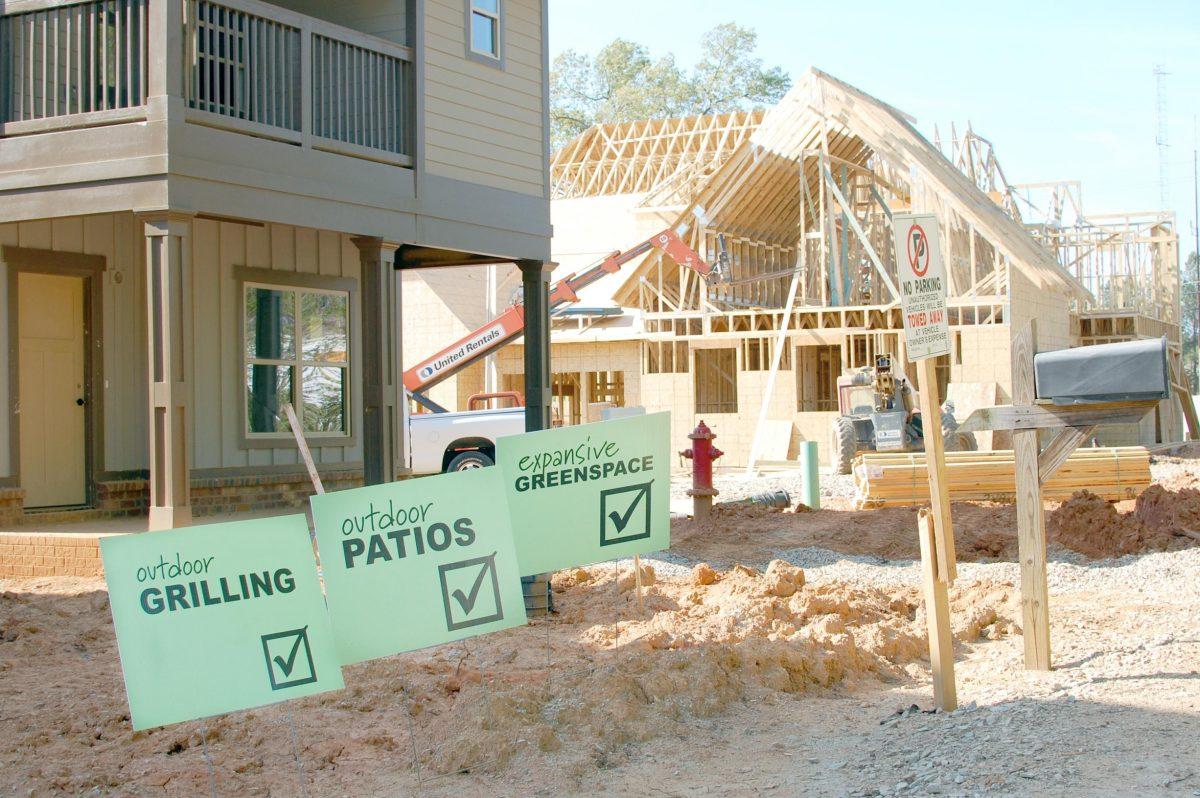Lee, Bragaw , Tucker, Alexander. Some of N.C . State’s residence halls that for years have provided students with living space and quick access to classes. That’s all changing with the addition of more and more off-campus apartments which cater to modern-day student needs.
Pauleena Le, an undeclared freshman in management, is one such student opting out of returning to a dorm next year. Instead, she will be moving to University Woods, located just off of Avent Ferry.
Her perspective on why students choose to move into these apartments deals with finances and space.
“I think because…they have more room, it’s just a lot better than living in a dorm,” Le said.
According to the Campus Prowler website, 66 percent of N.C . State undergrads are living off campus in places like Valentine Commons, located off of Hillsborough Street. This location will include a fitness center, aerobics room, game rooms and tanning beds by the end of its construction.
Pat Postal, director of leasing, maintains the construction will be done by the time of the opening in August and that they’re still actively leasing every day.
Their rates, which start at $645 for a 4-bedroom, are all-inclusive, including electricity, water, sewer, cable and Internet.
“You don’t have to worry about driving to campus, since it’s right outside your front door,” Postal said.
Campus Crossings’ 4-bedrooms, however, are $490, according to Calvin McDonnell, lead keystone.
Their motto is, “Live on your own, but not by yourself.”
Some of Campus Crossings’ amenities include volleyball and basketball courts, a pool, a clubhouse and a recreation center.
“It gives you freedom without the constraints that a dorm has,” McDonnell said.
The Retreat, another student housing community being built on Hillsborough Street, will be about 9,000 square feet. Some of its expected features include a golf simulator, tanning beds, a pet spa and cardio space.
Their website also boasts cottages that have “classic, Craftsman-style architecture” and extensive greenery.
Overall, the housing complexes surrounding N.C . State provide similar services that can’t be found in dorms.
As a result, it would be reasonable for students to think the number of individuals in dorms is decreasing as off-campus apartments appear more attractive.
In fact, that is not the case, according to Susan Grant, director of University Housing.
For the past two years, there has actually been a 5 percent increase each year in students who have decided to return to on-campus living, Grant said.
“No one has to live on campus,” Grant said. “But our halls and apartments offer leadership opportunitiesand round out the on-campus experience.”
Moreover, according to the University Housing website, between 2005 and 2010 the number of returning students also saw an increase of about 34 percent. Also, when the statistics are broken down, the occupants of residence halls and Wolf Village consist of about 47 percent freshmen.
However, the 2020 enrollment plan, sponsored by both Chancellor Woodson and Provost Arden, will be seeking to steadily decrease freshmen enrollment.
Off-campus opportunities are approximately the same price per month as off-campus opportunities, considering the estimated cost for housing for N.C. residents in the 2012-2013 year is $5,434, translating to $543.40 per month for 10 months.
“I thought living in a dorm was sort of not really nice,” Le said. “Most of my friends are living in apartments now. They’re in ones like Campus Crossings; some of them are in University Woods. An apartment is a huge upgrade.”








